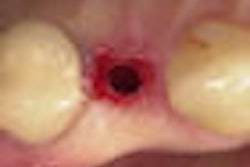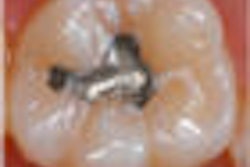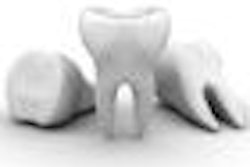
Dentists often overlook a natural alternative to implants, even though it is right inside their patients' mouths.
Transplanting a patient's tooth from one location to another can be a viable, attractive substitute for dental implants, according to Peter Reich, D.M.D., a New Hampshire oral surgeon who has performed more than 200 transplants.
Yet, he said, many dentists don't even know that this procedure exists. While these transplants are only feasible in limited types of cases, they can bring fabulous results, he said, all the while reducing the need for root canals and the potential for bone loss.
"It's nice to have it as another trick," he told dentists attending the recent Yankee Dental Congress in Boston.
Tooth transplantation has been going on for centuries, with reports dating from the 1500s B.C., when Egyptian slaves were forced to give teeth to pharaohs. In the modern era, they've been done routinely since the 1950s, Dr. Reich said, though almost exclusively with teeth being moved within one patient's mouth.
Although the practice is common in Europe, it's almost unheard of in the U.S., he said, probably because of the intense marketing of dental implants here.
Many of the transplants are performed on young patients who may have congenital anomalies or who have lost a tooth during an injury. Often these children can't get an artificial implant immediately because dentists need to wait until their adult teeth are in place.
In one case, dentists were able to transplant a tooth impacted in a 13-year-old girl's chin. In other cases, dentists have moved impacted molars around in teenagers' mouths.
"I don't think you're going to get an implant to look better," Dr. Reich said, showing slides of the successful results.
Studies following transplant patients have shown long-term tooth survival rates as high as 98%. (When DrBicuspid.com asked for a citation, Dr. Reich mentioned a February 1998 study of 118 transplanted premolars in the European Journal of Orthodontics [Vol. 20:1, pp. 45-55].)
One key to transplant success is not touching the tooth's root, Dr. Reich said. "It's like repotting a plant from one area to another," he said. "Attention has to be paid to the root." Typically he keeps the forceps on the crown itself. If you damage the root or root sheath even slightly, it can increase the potential for resorption, he said.
Good tooth buds also are needed for successful transplants, according to Dr. Reich, and he offered several suggestions on how to get the best results. When transplanting a tooth, leave 2 mm of bone on both mesial and distal sides, he said.
As for stabilization, he likes the tooth to be in "light function" so people aren't only biting on the transplanted tooth. If the tooth needs to be stabilized at all (which typically only occurs in transplants of cuspids or bicuspids), he recommends using only the lightest available orthodontic wire. "It's all about preventing resorption," he said.
Put the transplanted tooth below the plane of occlusion, he said; the tooth will grow up into place. If dentists want to use orthodontia to straighten the new tooth, they need to wait at least four months, because that's how long it takes for the transplanted tooth's revascularization to occur.
After that, there's a six- to nine-month window when the tooth can be moved, according to Dr. Reich. Outside that window, there is a potential for ankylosis, though this occurs only in about 1% to 4% of all transplanted teeth.
Using patients' natural teeth to repair their dentition could become more common in the near future, Dr. Reich said, citing the latest stem cell research. Already, scientists are using stem cells to regenerate jawbones, he noted, and they have been able to regenerate teeth in mice. In the future, dentists may routinely grow teeth in a test tube and then transplant them.
"This is the biggest paradigm shift in dentistry -- ever," he said. "We're going to see this in our lifetime."
Copyright © 2009 DrBicuspid.com



















